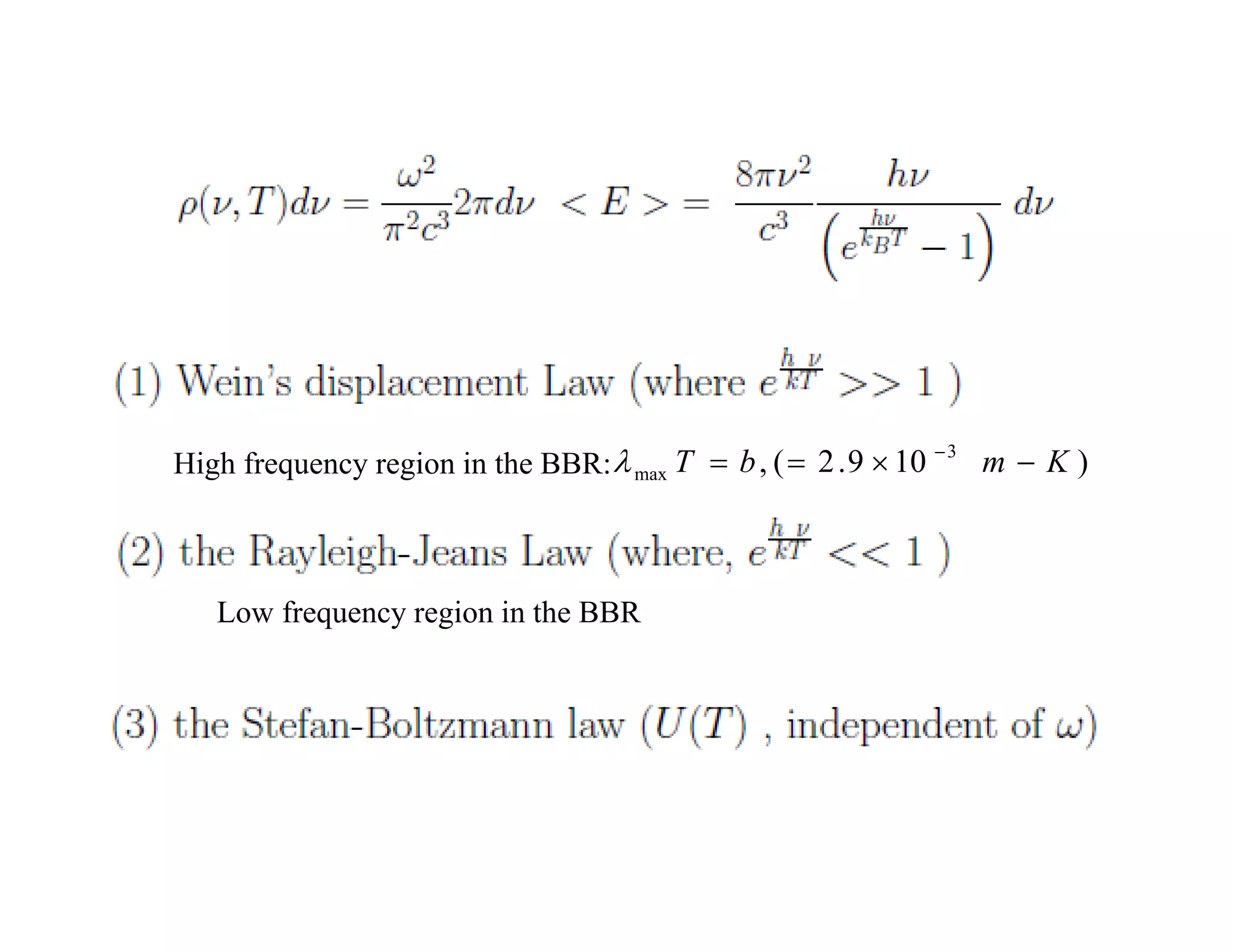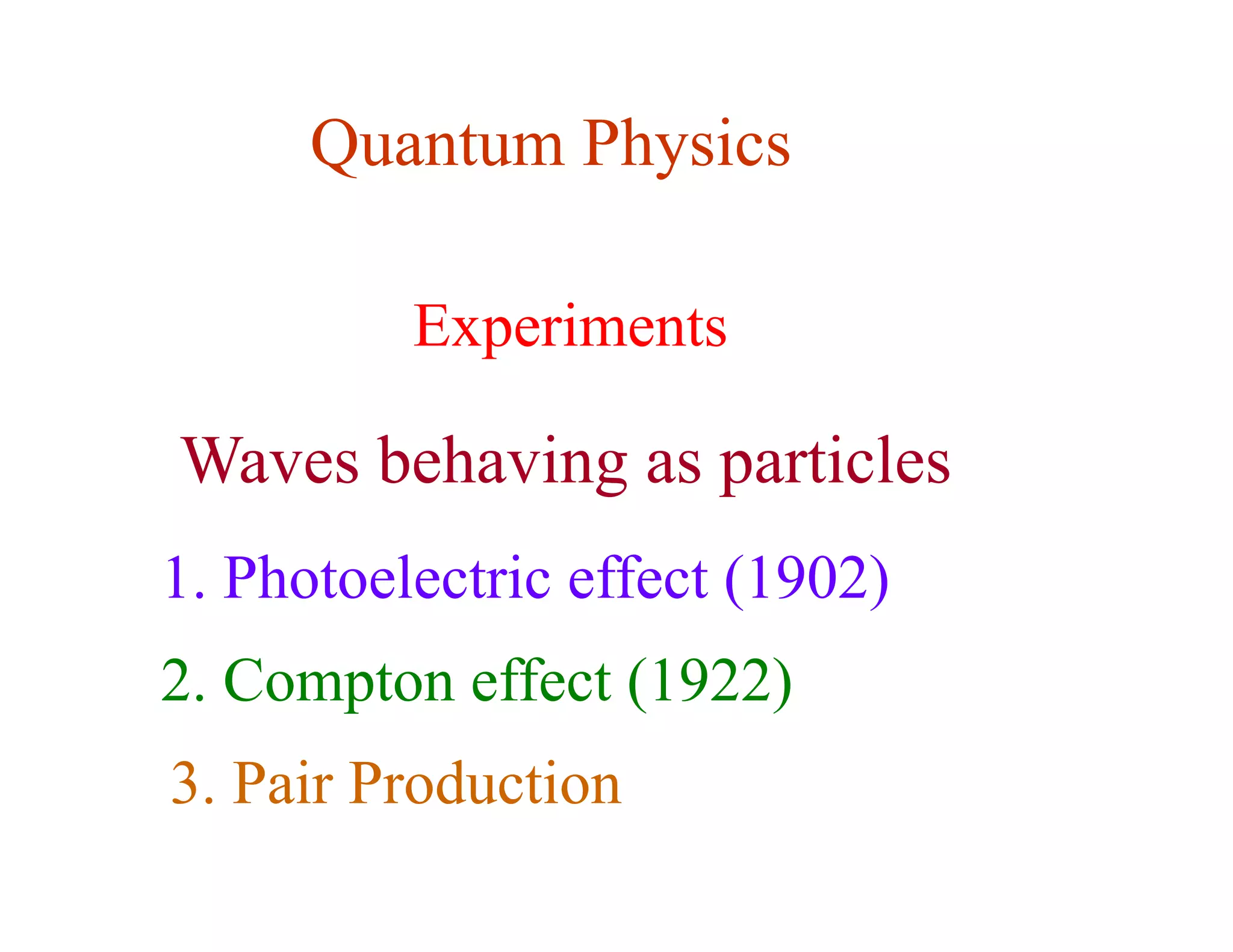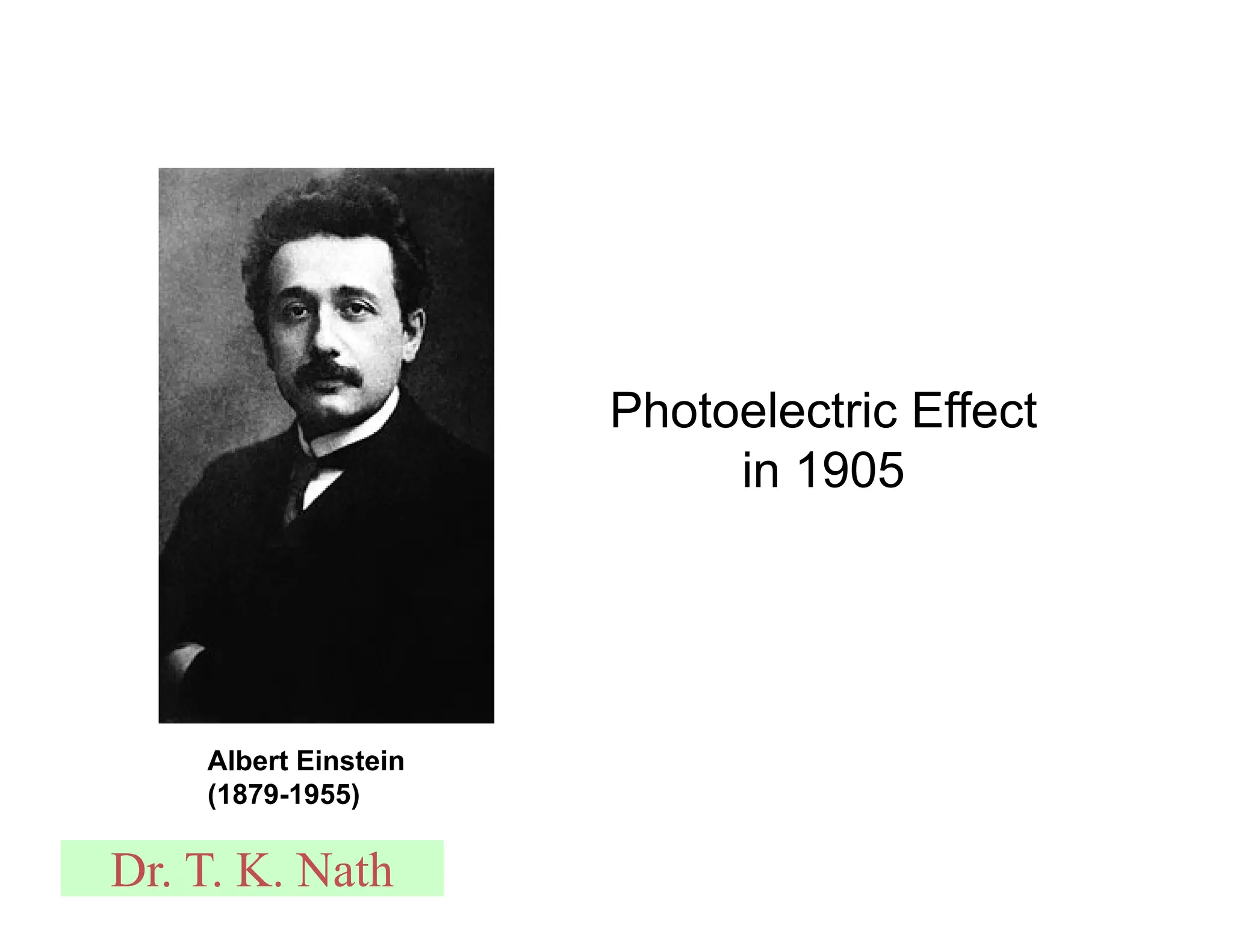Planck introduced the concept of quanta to explain blackbody radiation. Classical physics predicted radiation energy would increase indefinitely with frequency, but observations showed it plateauing then dropping off sharply. Planck hypothesized radiation was emitted and absorbed in discrete "quanta" of energy proportional to frequency. This resolved the ultraviolet catastrophe and fit empirical data, establishing quantum theory. Later, Einstein extended quanta to explain the photoelectric effect, lending strong support to Planck's hypothesis and the particle-like nature of electromagnetic waves. These developments marked the birth of quantum physics replacing classical concepts.
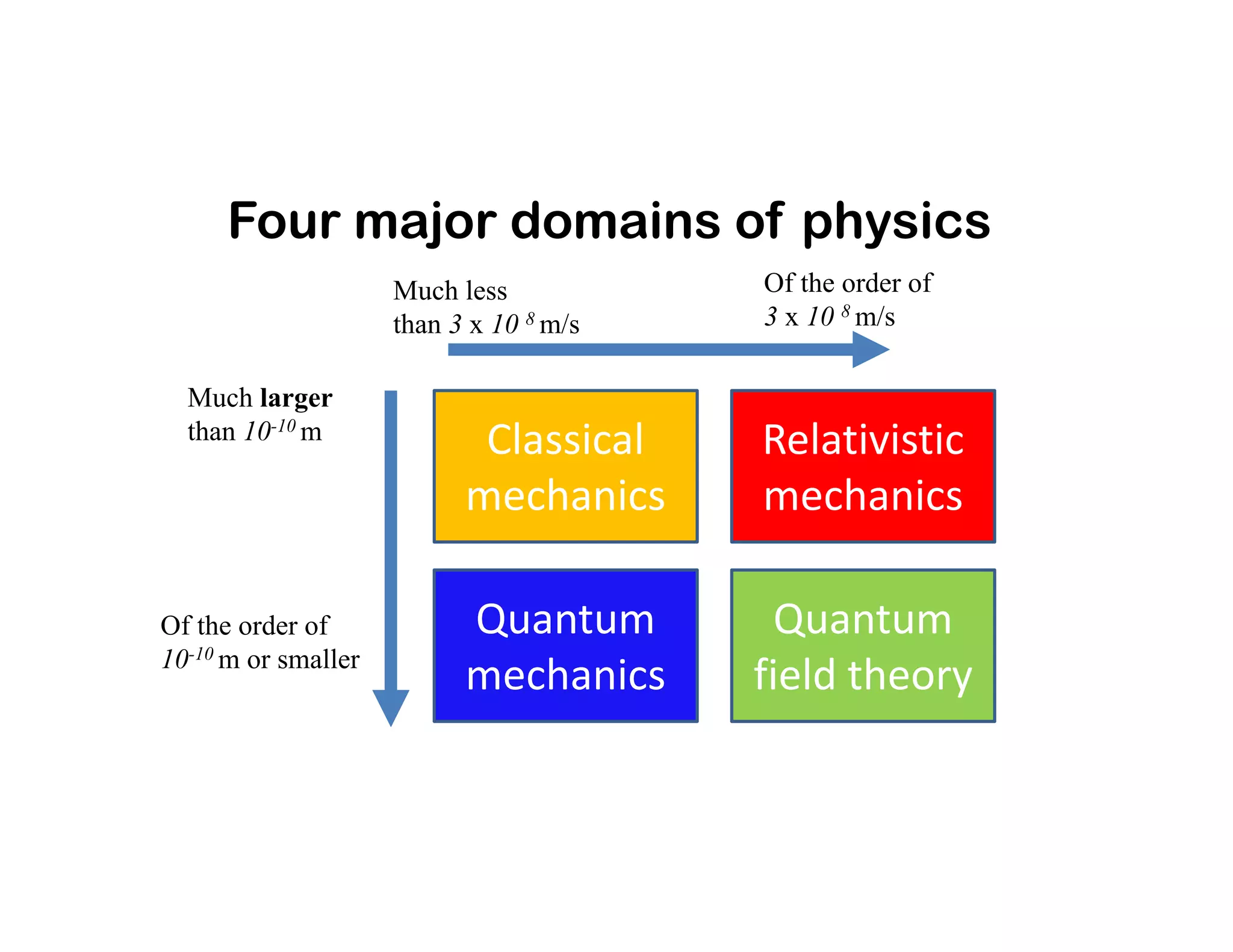
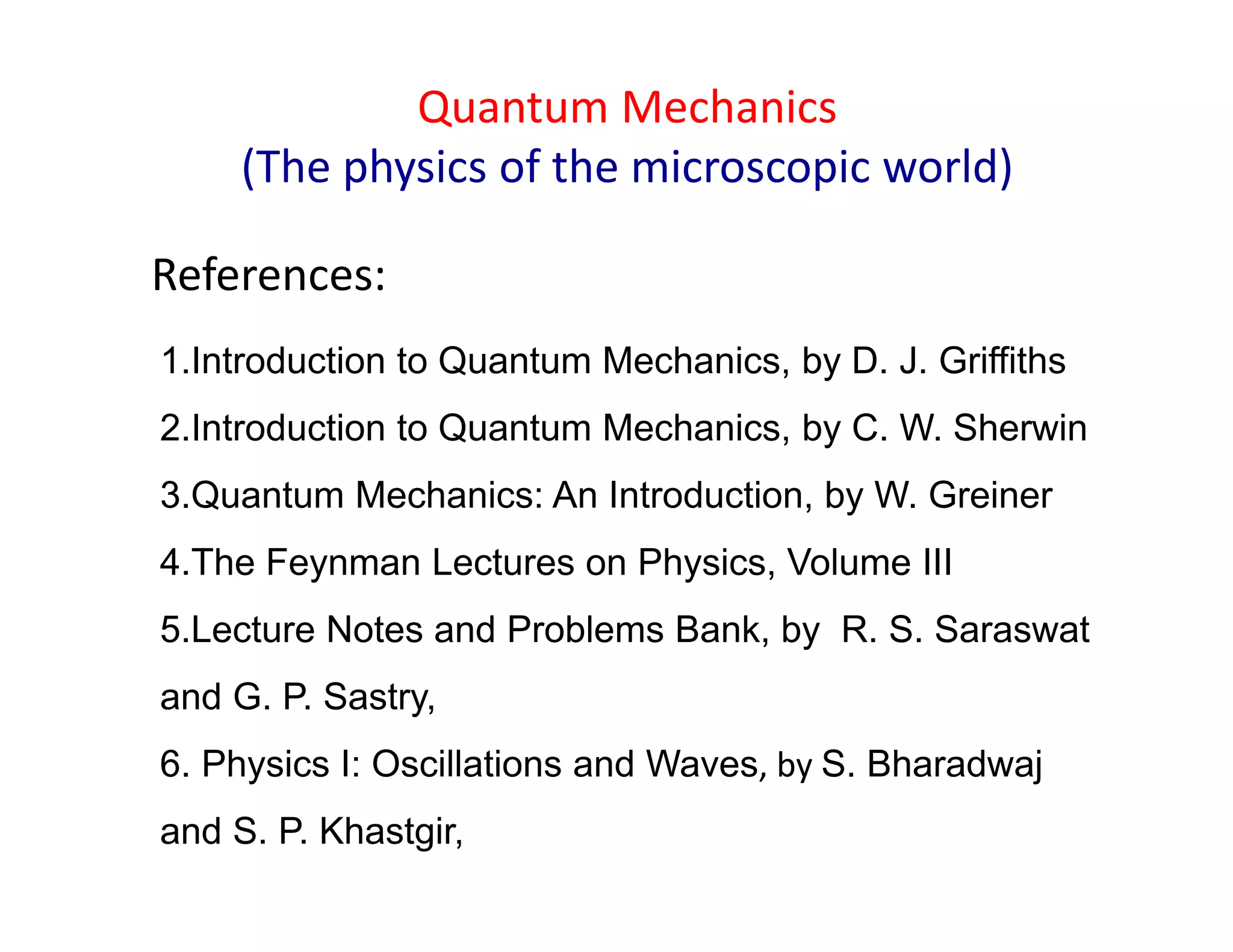





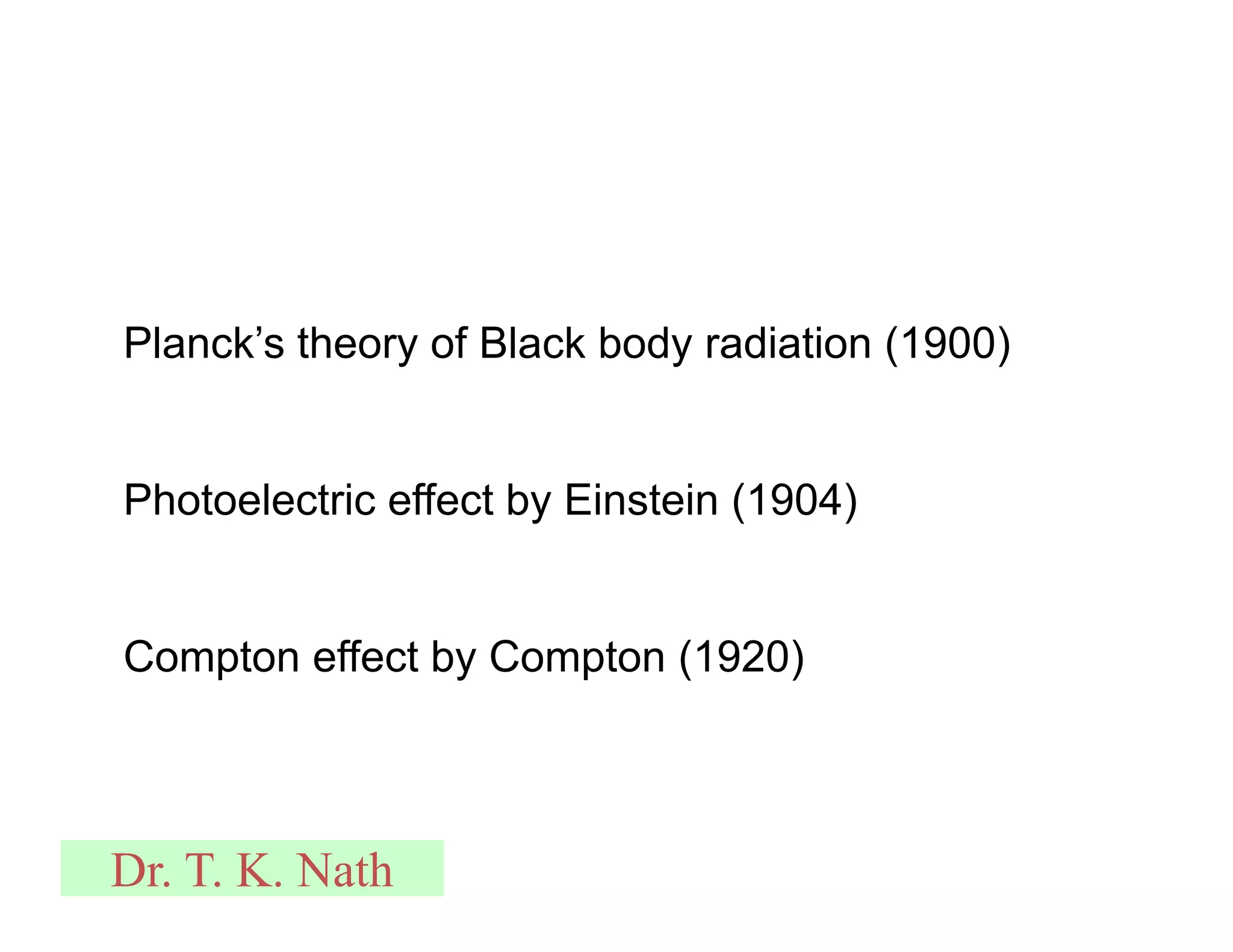

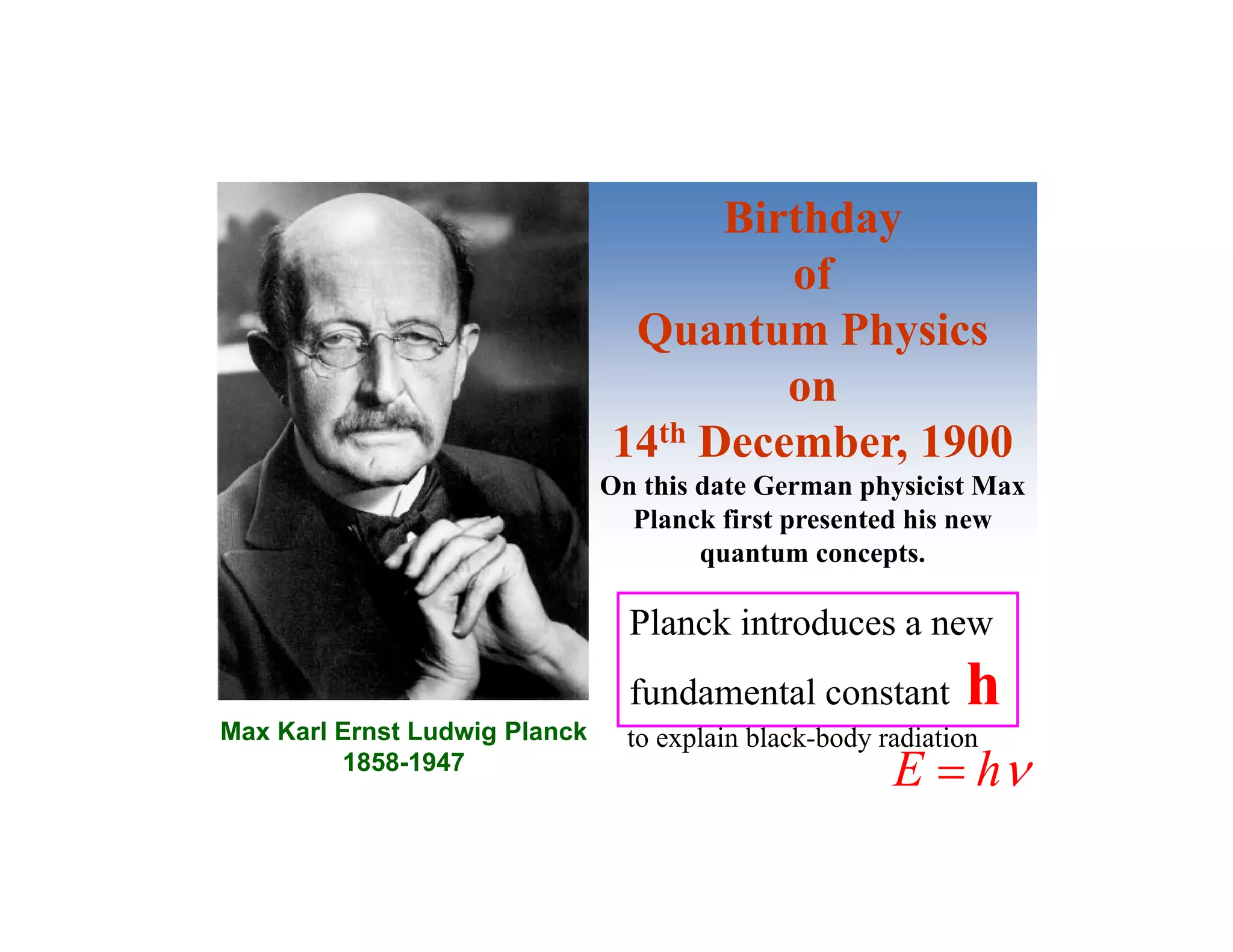
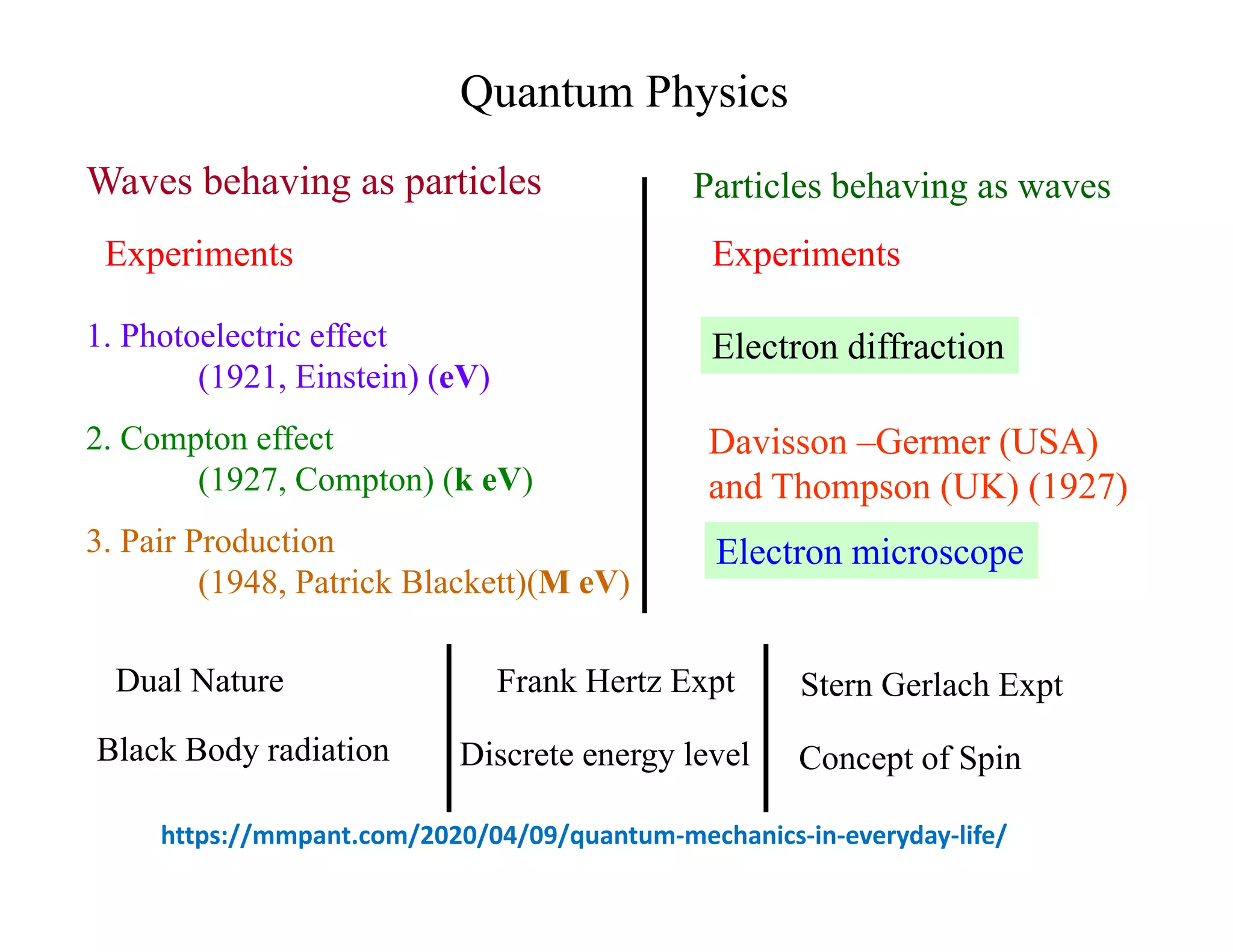

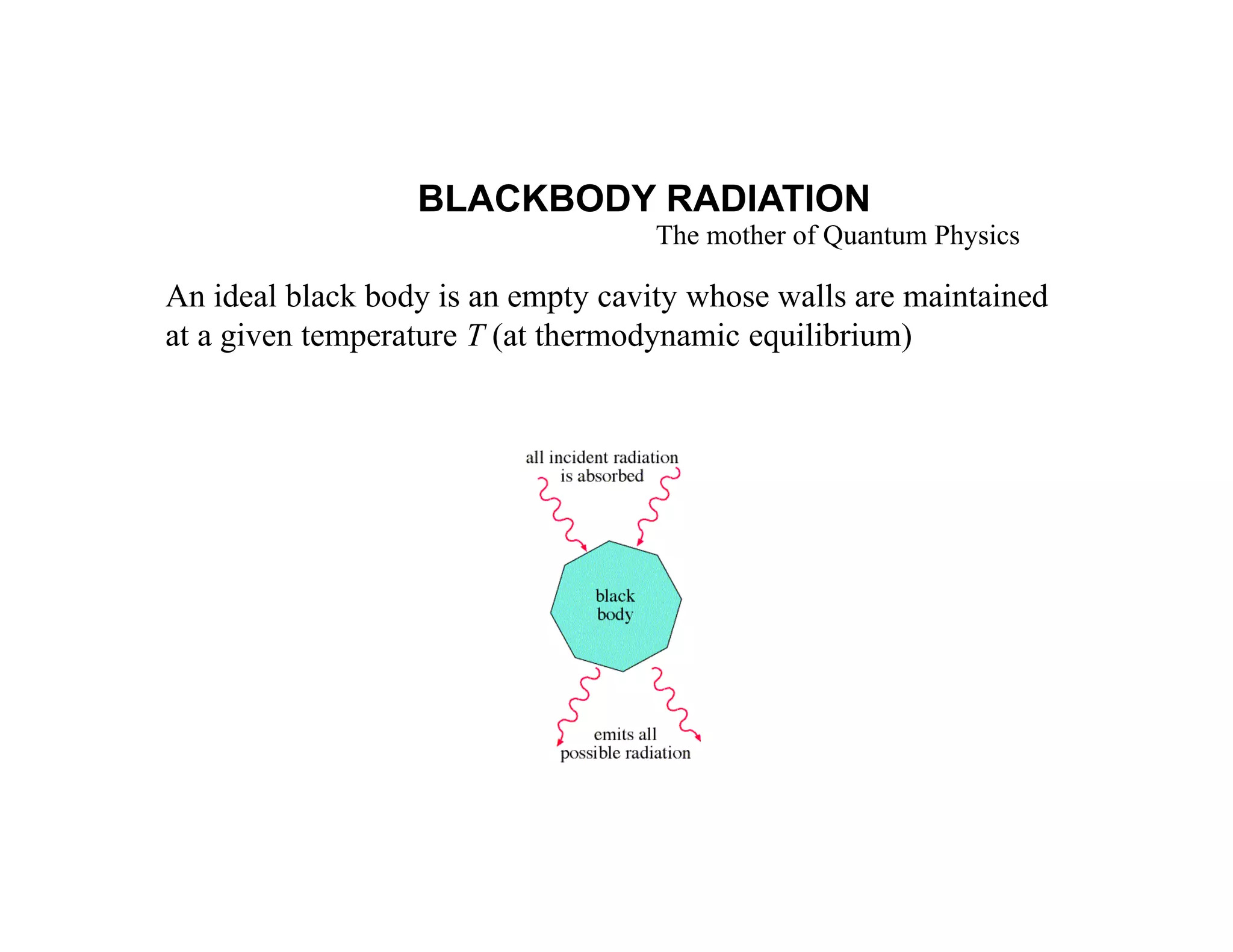


![0 0.5 1 1.5 2 2.5 3 3.5 4
[Hz] 1014
0
0.5
1
1.5
2
2.5
3
3.5
4
4.5
5
10-17
1,peak
2,peak
3,peak
T
1
= 1000 K
T
2
= 1400 K
T
3
= 1800 K
One of the main
challenges was to
explain the
spectrum of
blackbody
radiation from
classical
concepts
Observed spectral density of the black body radiation
vs. frequency at different temperature](https://image.slidesharecdn.com/tknlec261-230605050438-853b910c/75/tkn_Lec_26-1-pdf-16-2048.jpg)
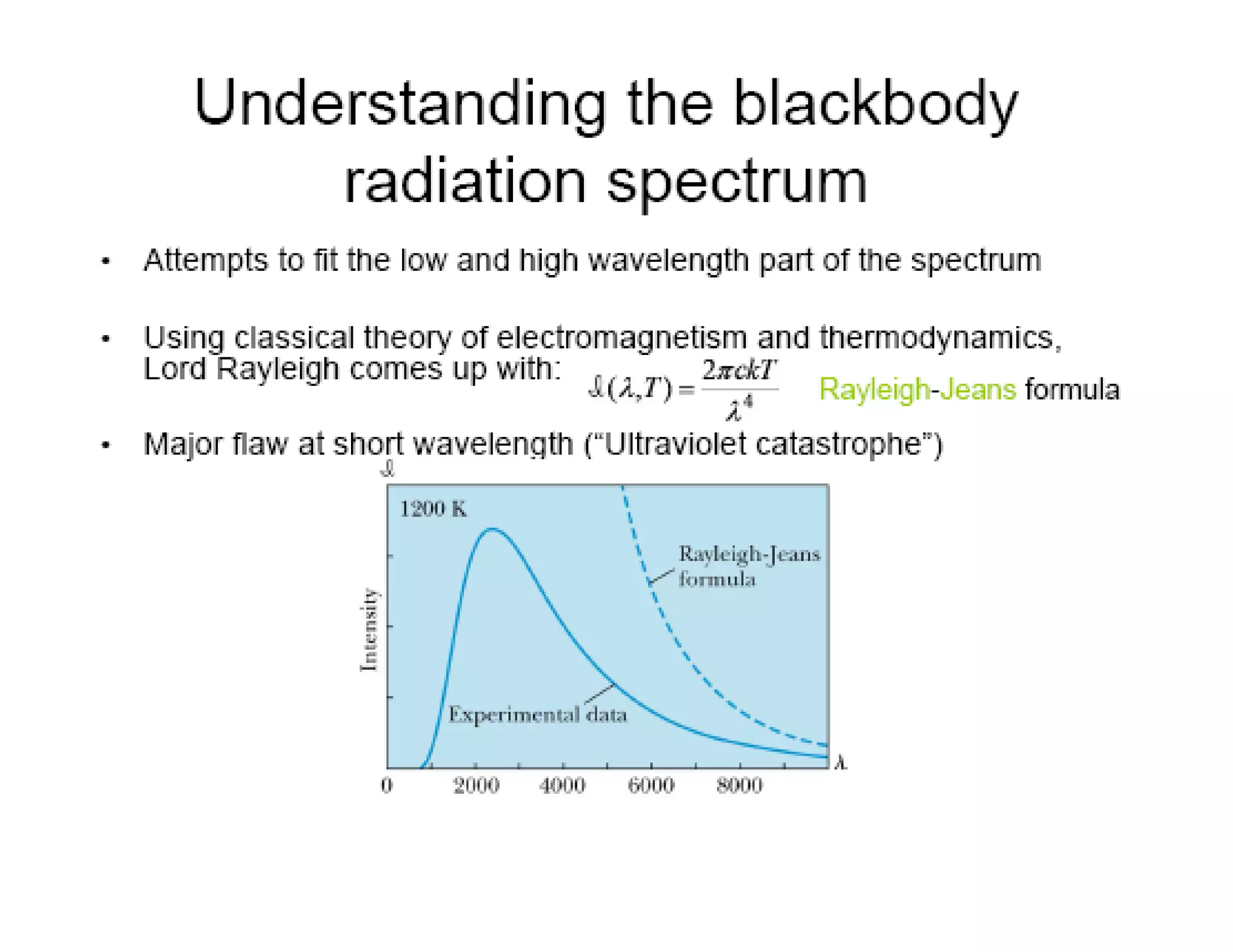
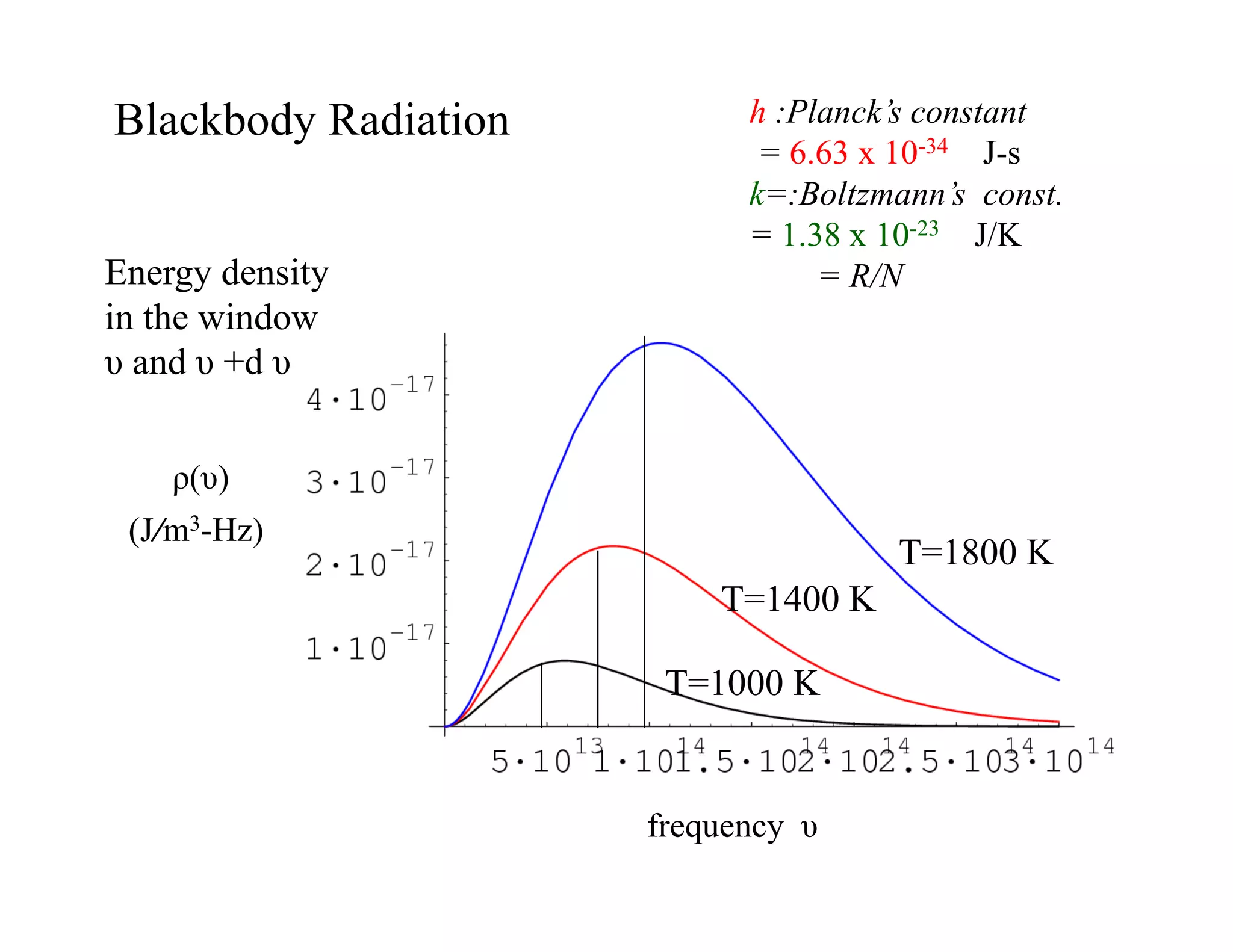







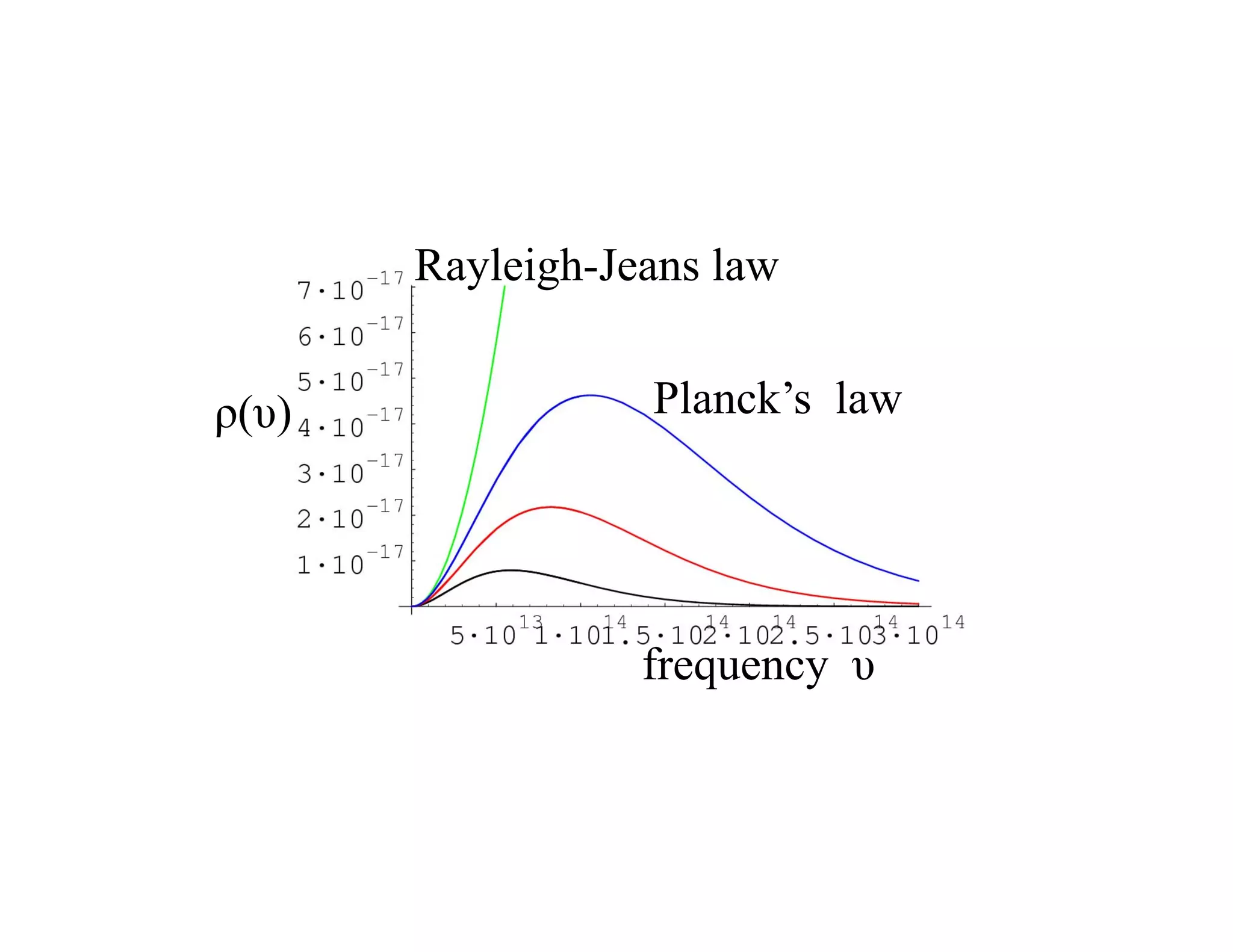





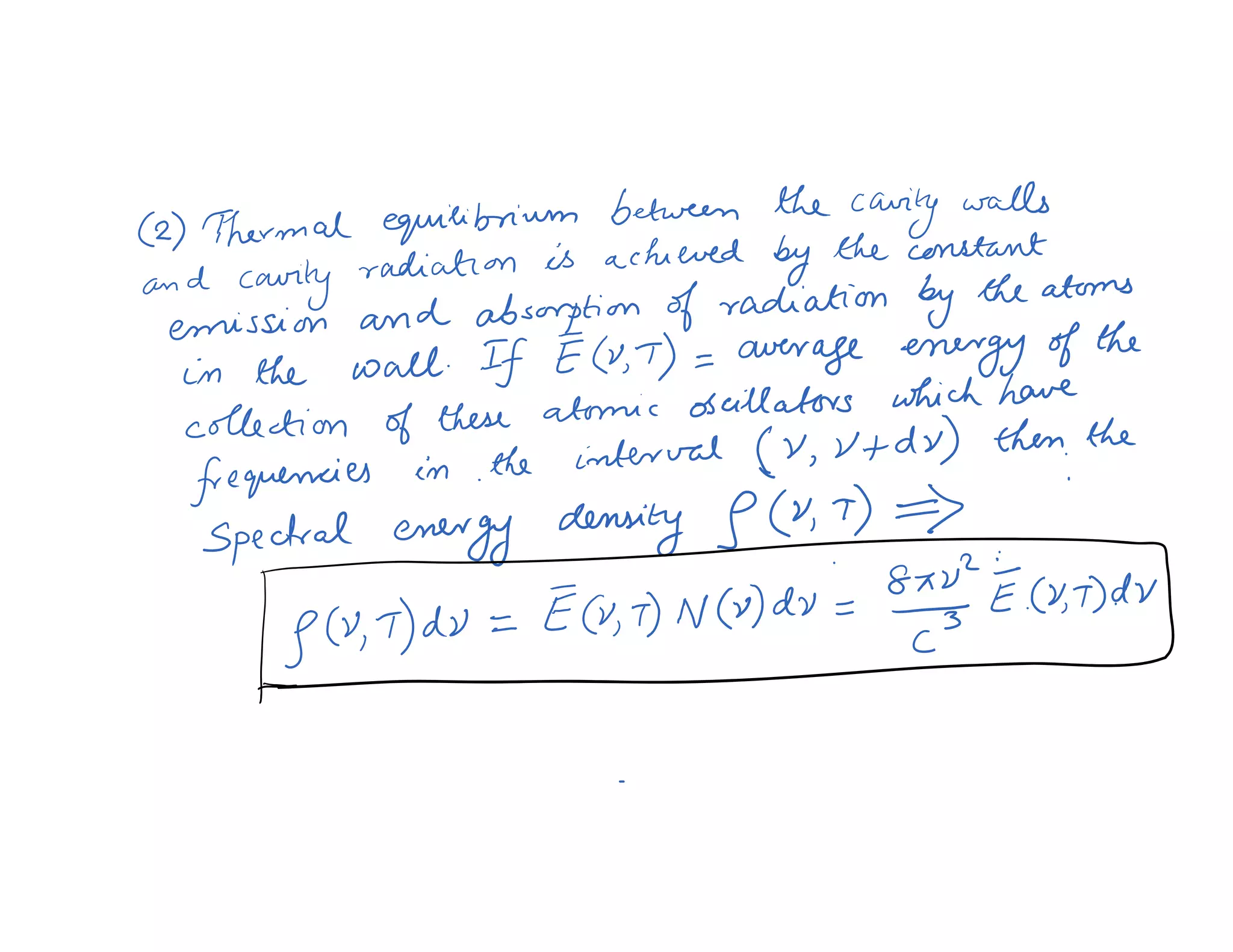



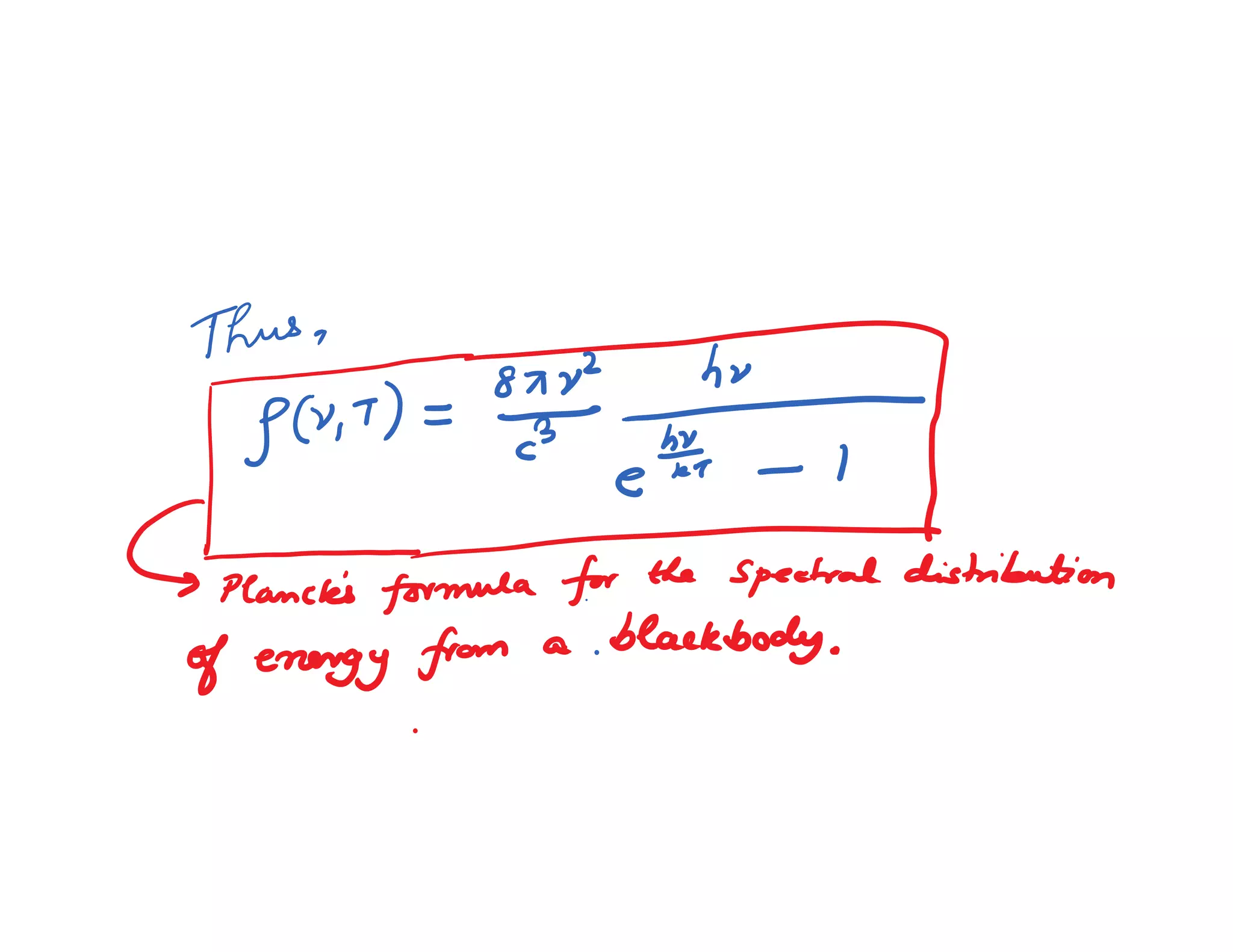


![Large
>>
‐
In the high frequency region
it falls down exponentially with increasing
frequency, again in agreement with
the black body radiation data
0 0.5 1 1.5 2 2.5 3 3.5 4
[Hz] 10
14
0
0.5
1
1.5
2
2.5
3
3.5
4
4.5
5
10
-17
1,peak
2,peak
3,peak
T
1
= 1000 K
T
2
= 1400 K
T
3
= 1800 K](https://image.slidesharecdn.com/tknlec261-230605050438-853b910c/75/tkn_Lec_26-1-pdf-39-2048.jpg)
